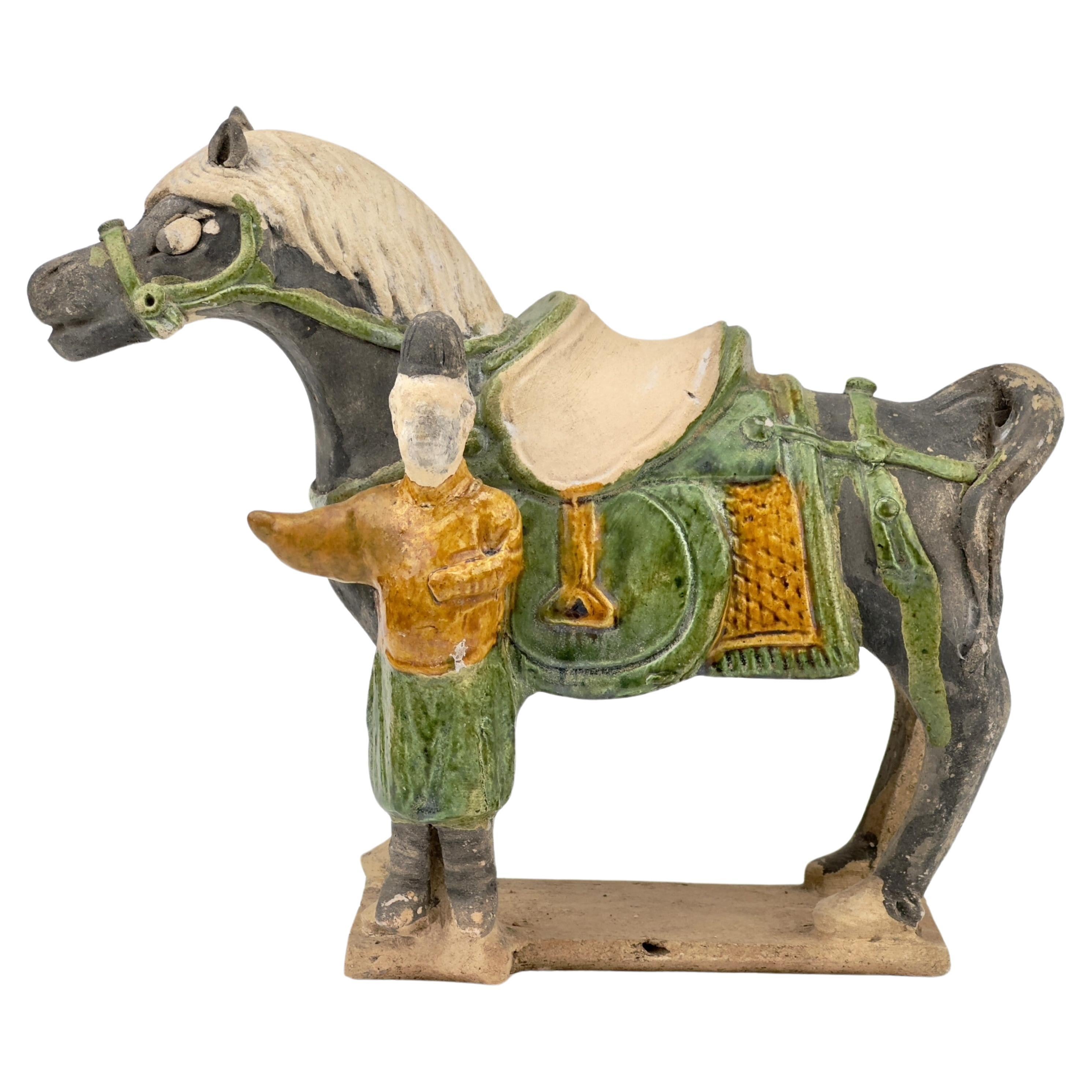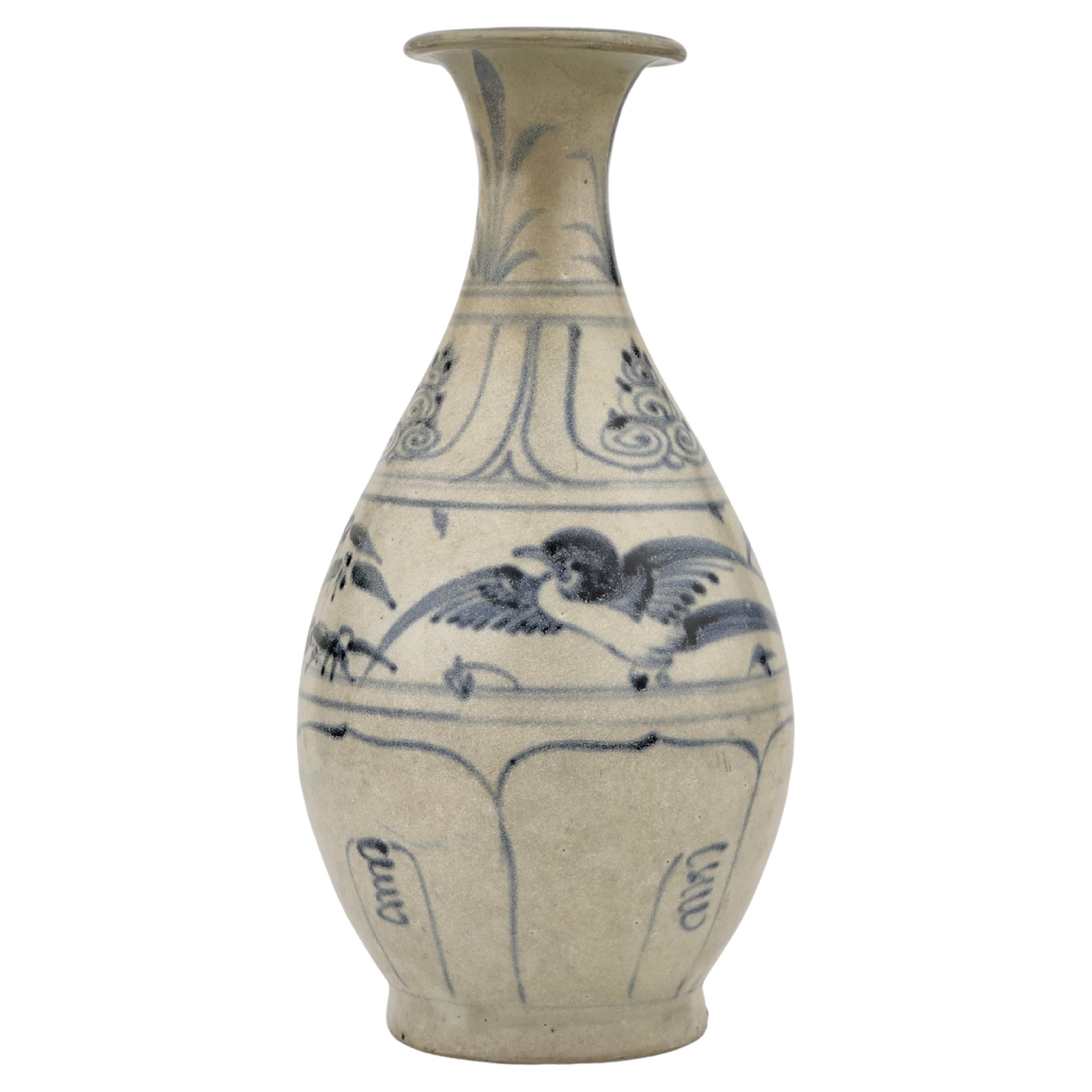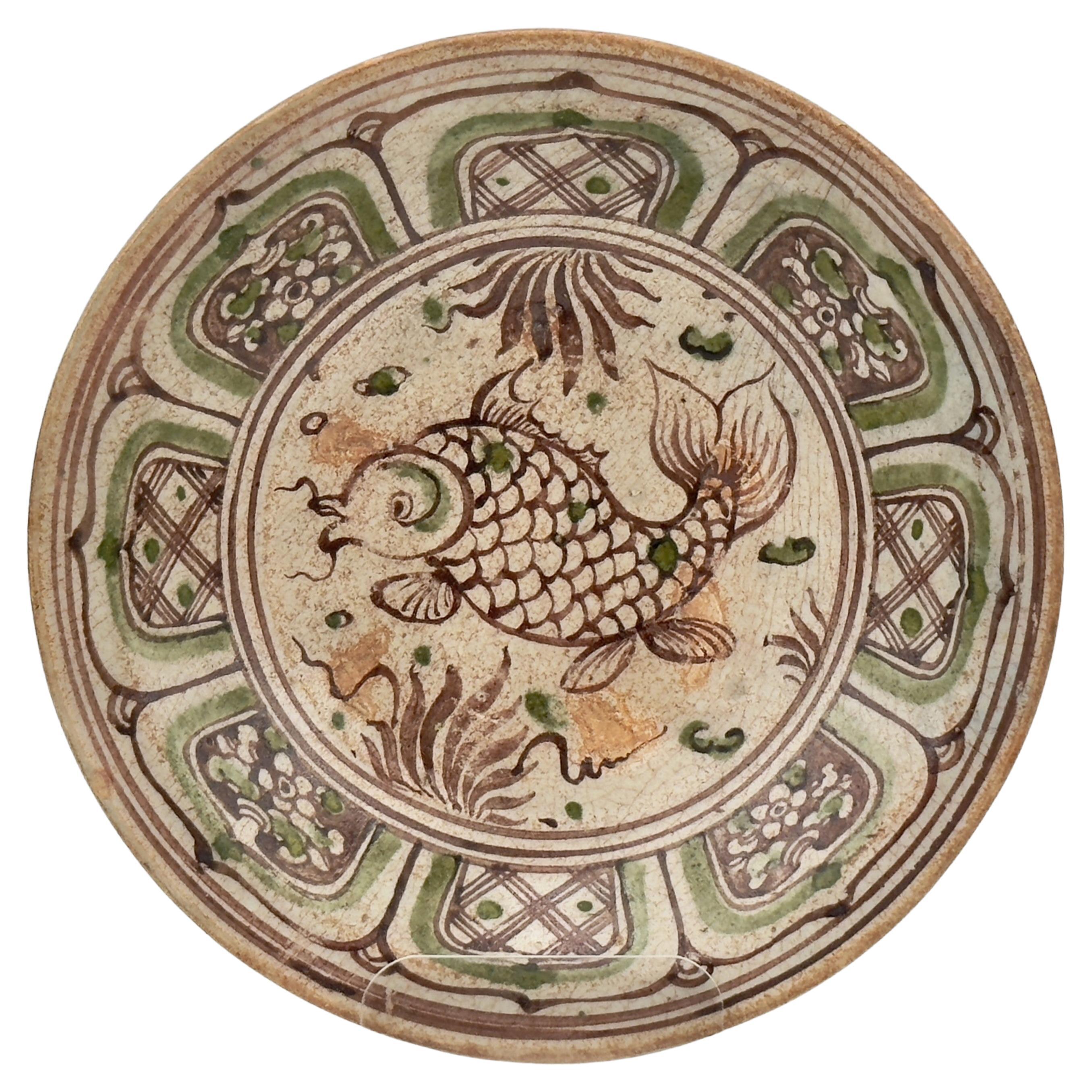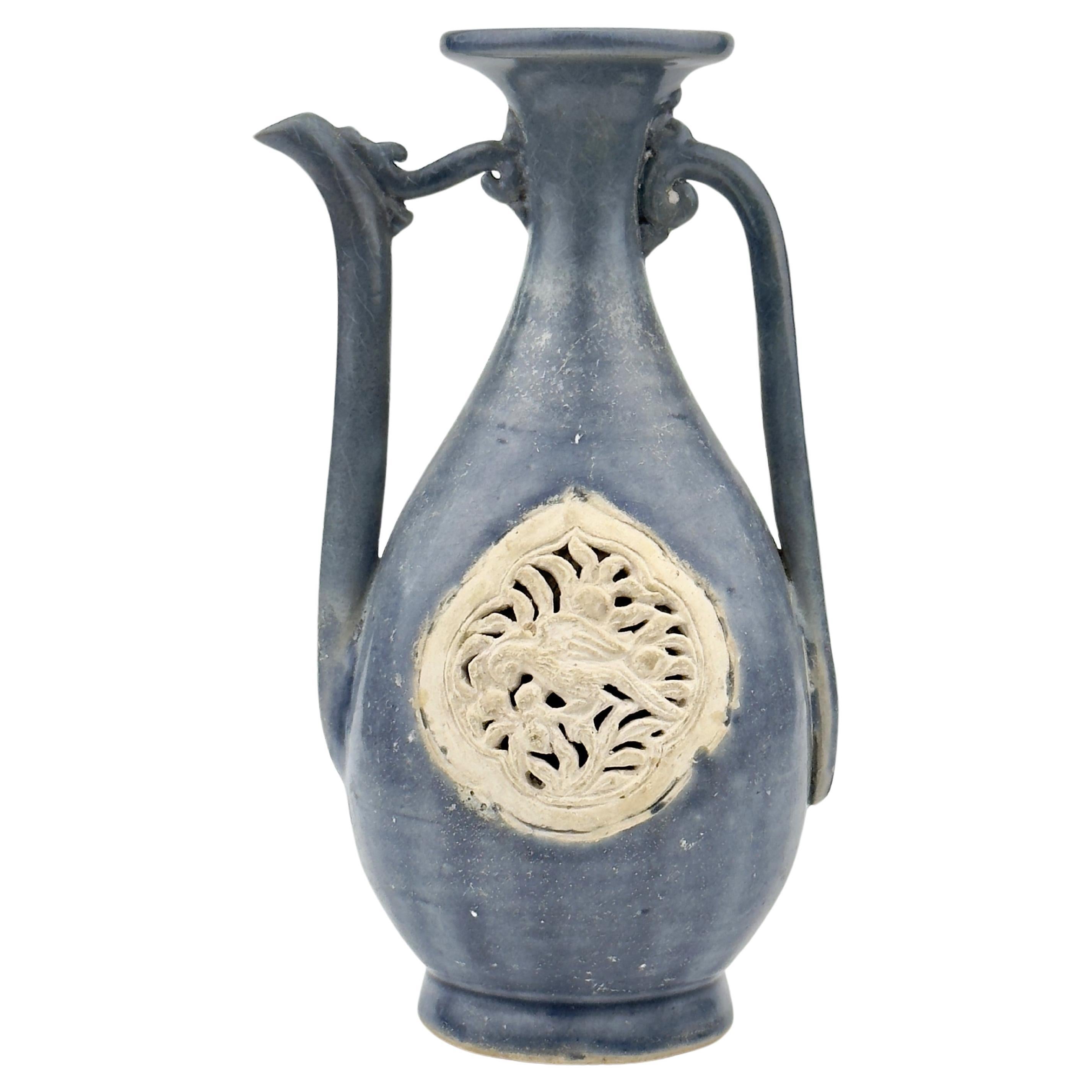Items Similar to Rare annamese cream glazed ewer, Vietnam, 11-15th century
Want more images or videos?
Request additional images or videos from the seller
1 of 11
Rare annamese cream glazed ewer, Vietnam, 11-15th century
About the Item
Famous annamese cream glazed ceramic ewer covered with a cream glaze. Traces of excavation are clearly visible in the glaze.
Dates : Presumably Ly Dynasty (11-13th century)
Region : Vietnam
Type : Ewer
Found/Acquired : Southeast Asia , South China Sea, Shipwreck
* Vietnamese Pottery from the 10th to 15th Century
From the 10th to the 15th century, Vietnamese pottery underwent significant developments, reflecting various technological advancements and cultural influences. This period marked an important era in which Vietnamese pottery developed its unique styles and techniques, impacting not only Southeast Asia but also a broader region.
10th to 12th Century: Early Developments
- 10th Century: After gaining independence, Vietnam began to develop its own pottery styles, moving away from Chinese influences. This period primarily featured simple forms and functional designs.
- Ly Dynasty: From the 11th century, during the Ly Dynasty, Vietnamese pottery became more sophisticated and varied. Although Chinese pottery techniques and styles continued to influence it, Vietnam started to integrate more of its unique elements and techniques.
13th Century: Leap and Innovation
- During this time, Vietnamese pottery saw significant advancements, particularly towards the end of the Ly Dynasty, showcasing unique beauty and technical innovation.
- Medieval Vietnamese Pottery: The major production area was the Red River Delta region, particularly in the north, famous for its scenic depictions on ceramics. Pottery produced here began to be exported to foreign markets, including China and Japan.
14th and 15th Century: Maturity and Expansion
- Ho Dynasty and Later Le Dynasty: During these periods, Vietnamese pottery developed increasingly complex designs featuring a variety of colors and patterns. High-end products such as blue and white porcelain were produced.
- Trade and Cultural Exchange: By this time, Vietnamese pottery was being exported beyond Southeast and East Asia, reaching even Europe. This indicated international recognition of the quality and artistry of Vietnamese ceramics.
- Dimensions:Height: 7.88 in (20 cm)Diameter: 3.15 in (8 cm)
- Style:Ming (Of the Period)
- Materials and Techniques:
- Place of Origin:
- Period:
- Date of Manufacture:11-15th century
- Condition:Repaired: Repair on spout. Wear consistent with age and use.
- Seller Location:seoul, KR
- Reference Number:1stDibs: LU9577239587732
About the Seller
New to 1stDibs
Joined in the past six months.
4.5
Vetted Seller
These experienced sellers undergo a comprehensive evaluation by our team of in-house experts.
Established in 1999
1stDibs seller since 2023
Typical response time: <1 hour
- ShippingRetrieving quote...Ships From: seoul, Korea South
- Return PolicyA return for this item may be initiated within 10 days of delivery.
Auctions on 1stDibs
Our timed auctions are an opportunity to bid on extraordinary design. We do not charge a Buyer's Premium and shipping is facilitated by 1stDibs and/or the seller. Plus, all auction purchases are covered by our comprehensive Buyer Protection. Learn More
More From This SellerView All
- Annamese Cylindrical Jar, Vietnam, 11-15th centuryLocated in seoul, KRFamous annamese cylindrical jar with lid. Decor modeled in lotus petals, covered with a cream glaze. Dates : Presumably Ly Dynasty (11-13th century) Region : Vietnam Type : Jar Fou...Category
Antique 15th Century and Earlier Chinese Ming Antiquities
MaterialsStoneware
- A Rare Annamese Blue and white Ewer, Circa 15th centuryLocated in seoul, KRStoneware painted with underglaze cobalt blue and remnants of overglaze enamel. Valuable piece housed in a few major museum collections in the United States. Year/Period : 15th century Region : North Vietnam Type : Ewer Found/Acquired : Southeast Asia , South China Sea, Hoi An Ship Reference : 1) Phoenix Art Museum - OBJECT NUMBER 2000.108.1 2) Asian Art Museum of San Francisco - Annamese Collection 3) Butterfield Treasures Hoi An Hoard Auction Catalogs / San Francisco Butterfields 2000 * Vietnamese trade ceramics Around the mid-14th century, Vietnam developed its ceramics production technology by producing blue and white porcelain, and began to export it overseas. During this period, China Ming Dynasty implemented a policy of lifting the ban from 1371 to 1657 and restricted foreign trade. This served as a good opportunity in the trade history of Vietnamese ceramics, and ceramic exports...Category
Antique 15th Century and Earlier Vietnamese Ming Antiquities
MaterialsStoneware
- Persian style Annamese stoneware, late 15th centuryLocated in seoul, KRStoneware decorated with Persian-style colors and patterns, and it is highly likely that this Annamese pottery intended for export was produced to meet Middle Eastern demand. Dates ...Category
Antique 15th Century and Earlier Chinese Ming Antiquities
MaterialsStoneware
- An Annamese stoneware with cobalt blue, Hoi An Hoard, Late 15th centuryLocated in seoul, KRLively birds flit across the body of this pear-shaped vase. The cobalt blue of the underpainting remains dark, even though the clear glaze of the surface has worn away after centuries under the sea. There was remarkable variation in the condition of the ceramic...Category
Antique 15th Century and Earlier Vietnamese Ming Antiquities
MaterialsStoneware
- A Rare Cream-Glazed Ewer and Cover, Northern Song Dynasty (960–1127)Located in seoul, KRThe octagonal lobed ovoid body rising from a short spreading foot to a tall trumpet neck, set at the shoulder with a tall curved spout and to the other side with a tall strap handle, the dished cover surmounted with a ruyi-shaped finial, covered overall in a creamy-white glaze. Compared to other similar types of Northern Song Dynasty ceramics, this piece is extremely elegant in shape. It most closely resembles the Qingbai porcelain in the collection of The Museum of Oriental Ceramics in Osaka. Period : Northern Song dynasty(960~1127) Type : Creamy-white glaze Ewer Provenance : Acquired in 1999, Hongkong Reference : THE MET Accession Number: 18.57.1 Sotheby's London 2018 - St George Street Sale Asian Art - Lot 208 * Song Dynasty Ding-Yao Ware Song Dynasty Ding Yao porcelain holds a significant place in Chinese ceramic art, specifically as a type of white porcelain produced during the Song Dynasty. Produced predominantly during the mid to late Song Dynasty, Ding Yao ceramics are renowned for their delicate and intricate features. Ding Yao ceramics were primarily crafted from clay rich in white minerals and fired at high temperatures to achieve a durable and lustrous surface. One distinctive characteristic of this serene white ceramic is the presence of silver or gold-colored splashes of glaze, often created using a mineral called galena. Galena, with its lustrous appearance, was suitable for creating fine patterns and intricate decorations. These ceramics frequently feature delicate carvings, floral motifs, or subtle decorations. While commonly used for utilitarian purposes such as tableware, Ding Yao porcelain also served as a medium for artistic expression, producing many artworks. The production of Ding Yao ceramics was relatively limited, and surviving pieces are considered rare and valuable art pieces...Category
Antique 15th Century and Earlier Chinese Ming Antiquities
MaterialsCeramic
- Rare Cream Glazed Ewer and Cover, Song Dynasty (960~1279)Located in seoul, KRThis is a Song Dynasty ceramic ewer, exhibiting the characteristic simplicity and elegance of the period. The ewer's form is sturdy with a full-bodied base that tapers gently to a na...Category
Antique 15th Century and Earlier Chinese Chinese Export Antiquities
MaterialsCeramic
You May Also Like
- Rare 15th Century Majapahit Terracotta Handmaiden FigureLocated in Brescia , BresciaStep into the enigmatic world of Majapahit culture with this exquisite 15th-century terracotta handmaiden figure, a mesmerizing testament to Java's rich heritage. Believed to have once borne offerings of oil or fruit above her head as symbols of blessing and protection, this sculpture exudes an aura of ancient reverence and spirituality. Hailing from the esteemed Trowulan region in East Java, this remarkable piece has journeyed through centuries before finding its place in the esteemed private collection of Anacleto Spazzapan. Documented in the Majapahit catalog on pages 170/171 as figure number 36, this sculpture has been meticulously studied and authenticated by Professor Agus Aris Munandar, a prominent authority in Indonesian archaeology. Professor Munandar, born in 1959, is currently the professor of Indonesian Archaeology at the University of Indonesia in Jakarta. His extensive research focuses on Hindu-Buddhist archaeology, iconography, and the ancient history of Indonesia and Southeast Asia. He served as a member of the Indonesian team of experts at National Cultural Heritage from 2015 to 2018 and previously held the role of Head of Institute and Research at the Faculty of Humanities at the University of Indonesia. Now the head of the Department of Archaeology at the University of Indonesia, Professor Munandar has authored numerous articles and 19 books, many of which delve into Majapahit culture and artifacts, solidifying his reputation as a leading scholar in the field. Professor Munandar's endorsement, complemented by a preface from Professor Massimo Vidale of the University of Padua, offers invaluable insights into the religious and decorative significance of Majapahit terracotta...Category
Antique 15th Century and Earlier Javanese Folk Art Antiquities
MaterialsTerracotta
- Chinese Ming Dynasty 15th or 16th Century Glazed Terracotta Funeral Table MingqiLocated in Yonkers, NYA Chinese Ming dynasty period glazed terracotta funeral table mingqi from 15th-16th century with food and drinks. Created in China during the Ming Dynasty, this terracotta funeral table showcases a typical Chinese altar, painted in green with tempera and adorned with a lovely variety of modeled and painted miniature food and drinks such as cakes. Called Mingqi, these kinds of terracotta models were traditionally placed in Chinese burials...Category
Antique 16th Century Chinese Ming Antiquities
MaterialsTerracotta
- Ming Dynasty 15th or 16th Century Chinese Glazed Terracotta Funeral Table MingqiLocated in Yonkers, NYA Chinese Ming dynasty period glazed terracotta funeral table mingqi from 15th-16th century with food in dishes. Created in China during the Ming Dynasty, this terracotta funeral table showcases a typical Chinese altar, painted in green with tempera and adorned with a lovely variety of modeled and painted miniature foods such as cakes and breads. Called Mingqi, these kinds of terracotta models were traditionally placed in Chinese burials...Category
Antique 16th Century Chinese Ming Antiquities
MaterialsTerracotta
- 15th Century, Sankampaeng, Antique Thai Sankampaeng Brown Glazed Pottery JarLocated in Sampantawong, THAntique Thai Sankampaeng pottery jar with brown glazed. Sankampaeng is a Northern Thai ceramic which kilns were found in Chiangmai province. Age: Thailand, Sankampaeng Period, 15th ...Category
Antique 15th Century and Earlier Thai Antiquities
MaterialsPottery
- 15th Century, Antique Thai Sankampaeng Pottery Ceramic Brown Glazed JarLocated in Sampantawong, THAntique Thai Sankampaeng pottery ceramic brown glazed jar. Sankampaeng is a Northern Thai ceramic which kilns were found in Chiangmai province. Age:...Category
Antique 15th Century and Earlier Thai Antiquities
MaterialsPottery
- 15th Century, Antique Thai Sankampaeng Pottery Ceramic Brown Glazed JarLocated in Sampantawong, THAntique Thai Sankampaeng pottery ceramic brown glazed jar. Sankampaeng is a Northern Thai ceramic which kilns were found in Chiangmai province. Age:...Category
Antique 15th Century and Earlier Thai Antiquities
MaterialsPottery
Recently Viewed
View AllMore Ways To Browse
Asian Influence Furniture
Antique Glaze On Furniture
Antique 15th
Antique Cream Furniture
Antique 15th Century Furniture
Rare Glazed
Vietnam Furniture
Rare Asian Art
10th Century
Antique White With Glaze
Antique Saw
South East Asian Furniture
13th Century Furniture
11th Century
Antique Exchange
12th Century Furniture
Early 13th Century
Red Glaze Chinese





